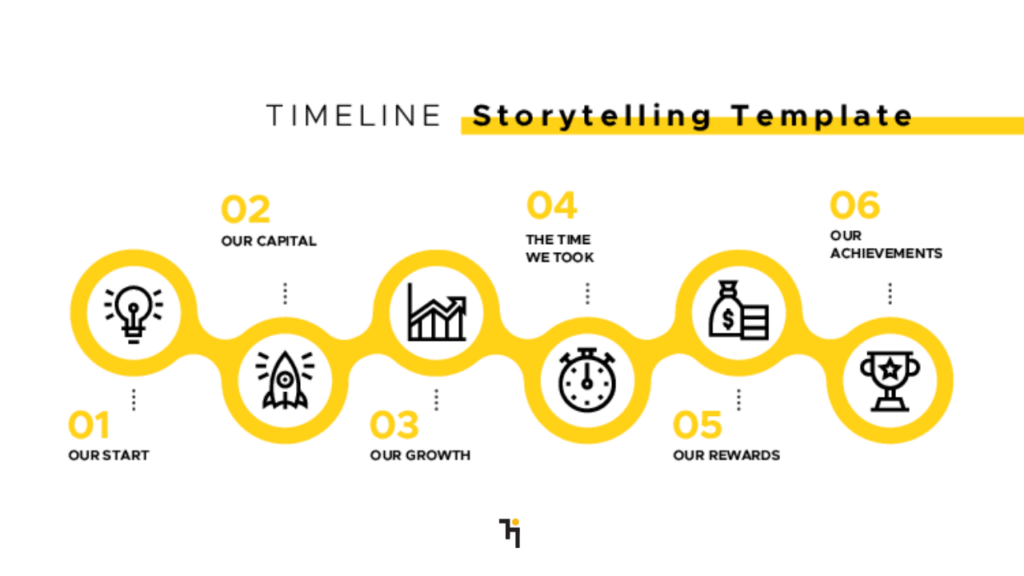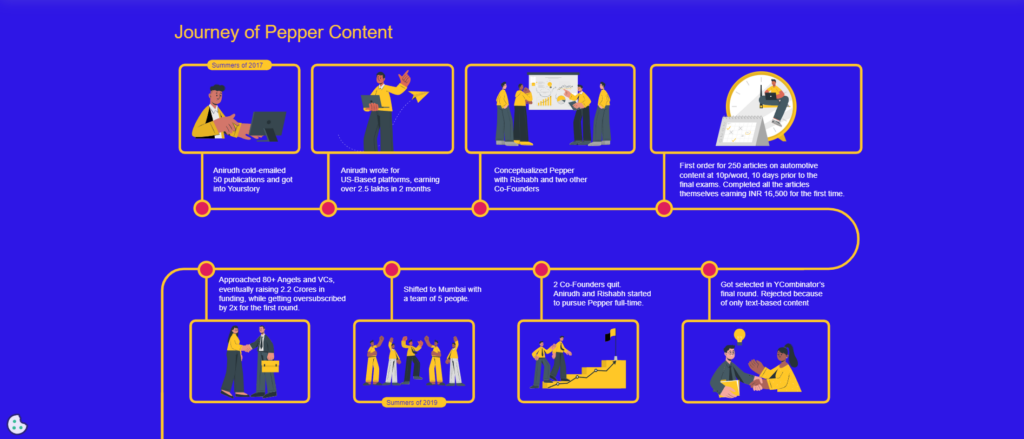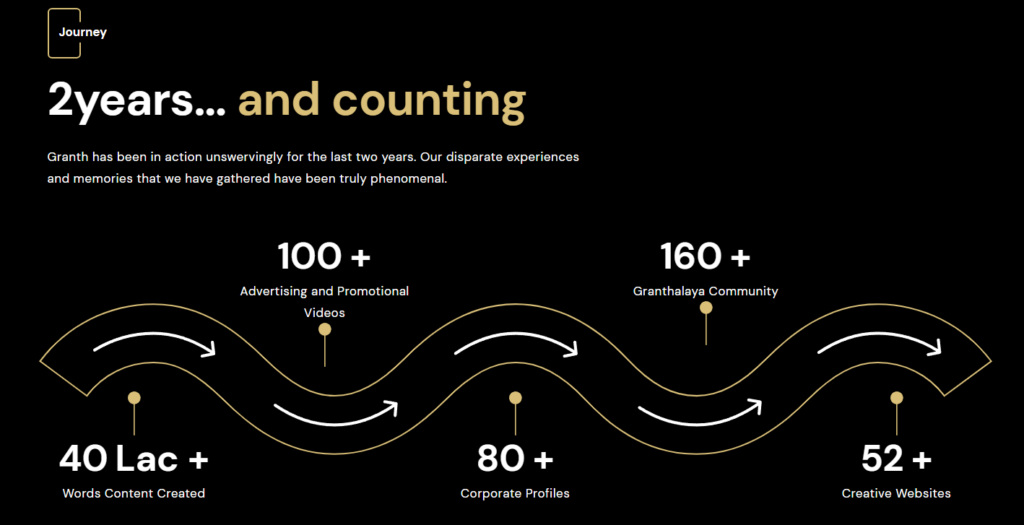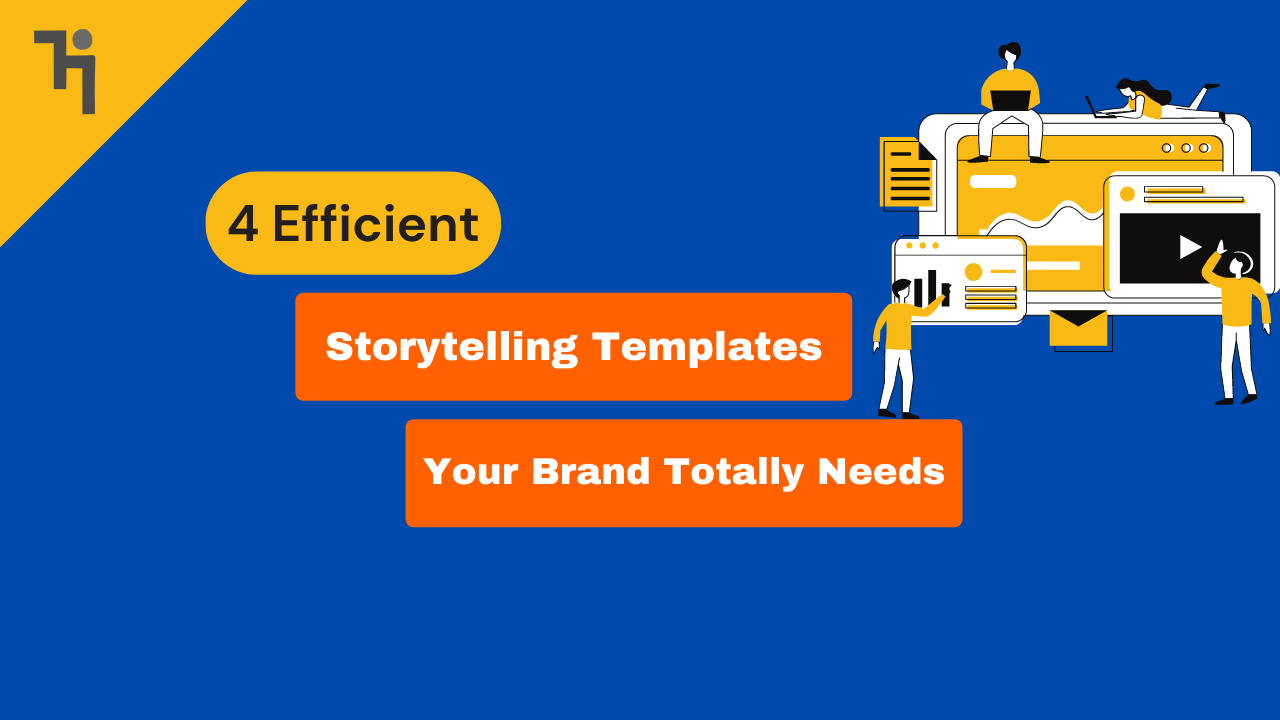Anybody in the content marketing industry would tell you that brand storytelling is the most efficient method to create a memorable impact with your brand. That’s irrespective of how boring your business is.
And how do you create exceptional storytelling content – storytelling templates.
Brands are so much involved in creating the next big thing and hopping on trends that they forget to create emotional connections with their audience. This doesn’t let people come across your brand and actually remember it.
As a content marketer, your responsibility is to create a great first impression for new audiences and a memorable experience for your existing audience.
The Storytelling Psychology - Why is it important for your brand?
With the never-ending competition and overly saturated content market, storytelling is what differentiates your brand from others.
Storytelling takes the attention away from product-plugging and pushes the narrative to build an emotional connection between the viewers and the brand.
Take a look at one of the advertisements Apple created for its HomePod.
In one of the surveys conducted by Headstream, it was found that 55% of people are more likely to buy a product from a brand if they loved their story, and about 44% of the people are likely to share this story.
Brand storytelling is an amalgamation of artistic and scientific approaches. Artistic because you need to be extremely creative in presenting your brand, and scientific because storytelling is directly proportional to emotional marketing, one of the best ways to retain your viewers’ attention.
When you see a brand repeating the same jargon, asking you to buy their products/services, how often do you feel compelled to take any action and check out that product?
Quite rarely.
But brand storytelling creates an impactful experience without necessarily focusing on sales and more on building brand awareness.
However, as easy as it sounds, storytelling is a huge responsibility, and that’s why you need the perfect storytelling templates to get started.
Why do you need storytelling templates in the first place?
Brand storytelling is a creative process, especially when you are just starting out. You are going to need all the work laid out for you when you are doing it for the first time.
This is where digital storytelling storyboard templates play an important role.
You have a great story and want to share it with your audience. What you don’t have is the general direction to get started, something you can achieve with a template in hand.
So if you want to get started with revolutionary content marketing in the form of storytelling, the following storytelling templates are a great way to get started.
1. The Timeline Storytelling

The timeline storytelling template is probably one of the most used and preferred digital storytelling storyboard templates. You see this template being used in depicting the journey of a company or brand over time.
The best things about this template are:
- Minimal
- To-the-point
- Highly informative
This kind of template is also the first choice for infographic designers because of its informative angle.
If you are using this kind of template for your business, you can practically adopt it on your ‘About’ page, your social media, or even your regular landing pages where you are trying to map your journey.
Pepper Content, on their about page, probably used this template the best way possible.

In such a template, you start off by mentioning how you gave your brand a start in the first place.
Then you mention how your brand grew, how you raised your capital, what you achieved throughout the years while keeping everything under a timeline. Feel free to underline every major event you feel is significant in this journey.
There are multiple ways of using this template, and you are free to experiment with whatever works the best for your brand.

How can you use the timeline storytelling template?
Since you know how timeline storytelling works, the best way to understand how it turns out for your brand is by mapping your journey roughly.
If your brand’s journey has enough elements to fill in all the blanks and create an interesting timeline of events, go for it.
There are multiple ways to create such templates. Creating personalized designs to fit such templates helps a long way.
2. Hero-centric storytelling
Every brand has a hero – the face of the brand. If yours doesn’t have one, treat your entire brand as the hero.
In hero-centric storytelling, the entire attention is paid to one character and their journey through a variety of phases. In such a kind of storytelling, the impact of the brand is clearly visible.
This kind of storytelling is popular across a variety of brands and depicts very interesting storytelling as it is:
- Brief
- To-the-point
- Catchy
Keeping your hero at the center of everything gives the viewers a hero to look up to, relate with them, and be invested in their story.
The character in this kind of story is involved in their own life, yet something is missing. The character wants something to feel complete and is struggling to gain that.
Towards a certain part, they achieve what they want, which is a key element that contributes to satisfying the story. And with this achievement, something changes for our hero, whether it’s good or bad, that’s the general direction of the story that you want to push it towards.
Reaching the end of the storytelling, our character again reaches the first point where they started, yet something has changed this time.
How can you use the hero-centric storytelling template?
Whether you want your hero-centric storytelling to end on a happy note or a sad one, the best part is that following this kind of storytelling method is going to make the viewers relate to your hero and root for him.
This kind of storytelling is very efficient and effective for marketing purposes, making it one of the most favorable and relatable brand storytelling methods.
Implementing this kind of storytelling for your brand requires you to find a hero for your brand. Irrespective of what kind of a business you run, you can always find opportunities to adapt this kind of brand story.
If you are cyber security software, illustrate your hero as somebody who has fallen victim to his data being stolen. If you own an advertising business, show your hero as somebody who is tired of his brand not being discovered.
All you have to take care of is being smart with your approach and creating an impactful story in the shortest possible time.
3. The Relationship Storytelling
Relationship storytelling is ages-old storytelling and remains the most dominant in the daily ads we see everywhere.
We have a character and a side character, who share a kind of a love-hate relationship. The storytelling starts with both characters having some kind of relationship with each other yet having a disconnect with each other as well.
One of the characters, at least, seems to be working on making the relationship better but fails to do so at the beginning.
Somewhere along the lines, there comes such a scenario where both these characters are involved, and decide to lean on each other.
In one of the movies by DreamWorks, How to Train Your Dragon, the characters Hiccup and Toothless are very hesitant in trusting each other in the beginning. While one of these characters leans in more than the other towards the beginning, it sure builds the trust among both of them equally.
Most importantly, why this model of storytelling works is because it’s:
- Emotional
- Relatable
Visa India probably illustrated this kind of storytelling perfectly.
How can you use the relationship storytelling template?
Adapting the relationship storytelling in your brand is going to be slightly different than your other adaptations. The reason is that you want your audience to feel something towards the end of it.
This is why developing a script, a plot, and a story are essential for it to work for your brand.
As you are trying to develop your brand story, make sure you are also subtle with your product plugging and focusing more on the story itself.
4. The Experience Storytelling
Experience storytelling is probably the most emotion-capturing and compelling storytelling method for a brand.
This kind of storytelling features a narrative that puts the customer of your brand under the spotlight and captures their experience.
However, that’s not always the case because such experiences could be captured from anybody associated with your brand, right from your employees to the CEO itself.
You have a character that tells a story, usually revolving around your brand and how it impacted their lives.
This kind of storytelling is popular across many brands because it’s:
- Emotional
- Absorbing
- Compelling
Dove probably depicted this kind of storytelling the best.
How can you use the experience storytelling template?
For you to implement this kind of storytelling into your brand, you need to lay down one fundamental thing about your business – what kind of impact is it creating.
If your brand has some kind of significance that you can portray as a story, you can adapt this kind of storytelling.
This kind of storytelling is very popular among most marketing campaigns. However, if you are touching sensitive topics, you might want to put extra filters in place in order to not miss the mark with your story.
Towards the end…
You can practically find hundreds of ways to tell a story to your audience. However, the only thing that matters in storytelling is how well you connect with your viewers.
So as you prepare for the next marketing campaign you launch, find out what kind of storytelling suits your brand the most and implement it accordingly.
Spend time evaluating and assessing your story. Try to capture it in the most creative way possible. Its success will eventually bring those conversions you are looking for.
And while you are planning to create a story for your brand, let us take a quick look at your business and see if we could help. Connect with us and let us create an amazing story for you.

